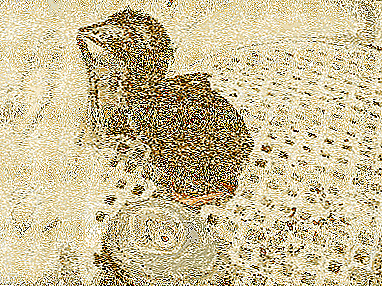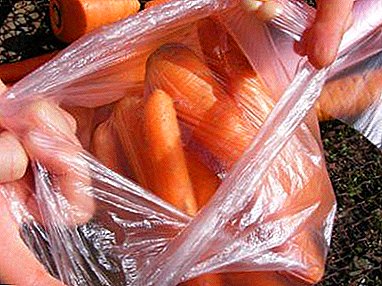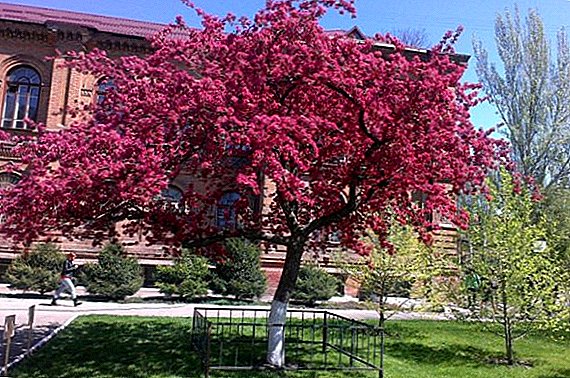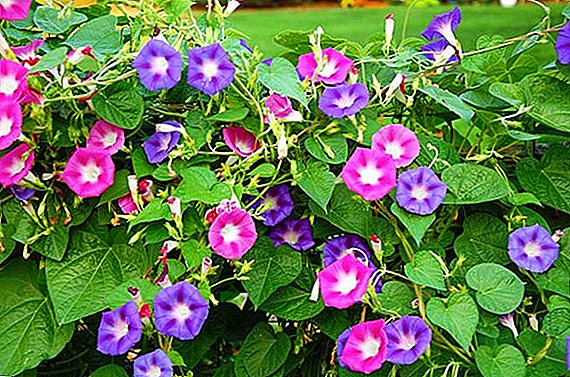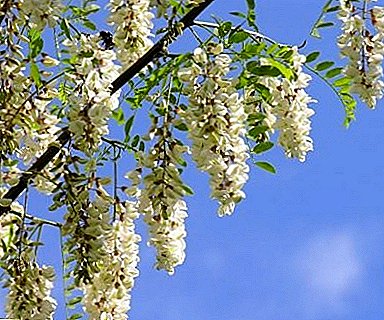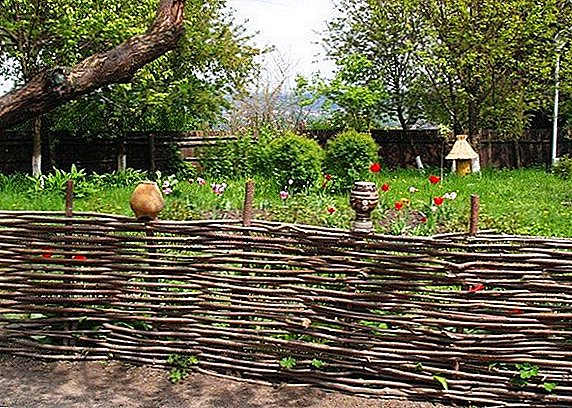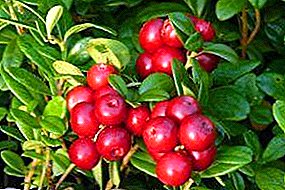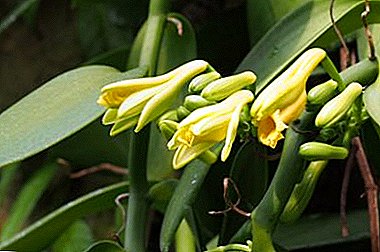
Vanilla Orchid, the scientific name Vanílla, belongs to the genus of perennial lianas of the ancient Orchid family. From this article, you can find out what Vanilla Orchid is, its detailed description and history of occurrence, differences from other types and subsort of vanilla orchids, when it blooms and how to care for it, as well as how to propagate and what diseases and pests can be.
What is this plant?
The flower belongs to the epiphytes - due to the structure of the knotted stem, it is easily attached to trees, stumps. There are also terrestrial species of vanilla orchid growing in tropical areas of the earth. The flower is also called Orchid Vanilla because of the fruits, which after processing turn into a known spice. For industrial purposes, the flower is specially grown in Indonesia, Madagascar, on the tropical island of Reunion. The fruit is a pod-shaped box.
Detailed description
In nature, vanilla orchid is rooted in pre-foliage. Growing fast, the adult flower has long curly branches. The length of the stem reaches 20-25 m in length. Throughout the stalk are nodes that form aerial roots. The leaves are oblong, lanceolate, leathery, fleshy in structure. The length of the leaf plate is 15 - 18 cm. The leaves grow alternately, oppositely. At home, as a rule, the fruits do not ripen.
History of
In Italy, Spain, Vanilla orchid was known as early as the 16th century. Tropical liana was introduced to Europe later, in the 19th century. In modern floriculture, there are more than 100 species of this flower. The bred varieties are adapted for growing in apartment conditions.
Only a few varieties of vanilla orchid form fragrant boxes - fruit.
Tahitian and Vestindia vanilla extracts are widely used not only in cooking, but also in perfumery.
What is the difference from other species?
The main difference between orchids and vanilla from other orchids - the extent of the growth of stems. This variety is a liana - a tenacious, strongly climbing plant - a perennial. Also, some varieties of this species are grown specifically for the production of spices. For example, flat-leaf vanilla grows not only in the forests of Mexico and Panama, but is also actively cultivated in Madagascar and the Seychelles.
Vanilla orchid is a liana that stores water in the stems.like many representatives of succulents.
Vanilla orchid for one year with the right care gives an incredible increase. Stems grow by 50 - 100 cm.
Vanilla-type subsorts and their photos
Flat Plate (Vanilla planifolia)

Flat sheet - the most popular type, well adapted to home conditions. Grown as indoor or greenhouse culture. Blossom is abundant, fragrant. The flowers themselves are soft yellow, greenish yellow. Flowers bloom alternately. Flowering is long, up to 3 - 4 weeks. Fruits ripen in long pods. Pods grow in groups, up to 7 - 9 pieces.
Lemon splash

Varietal variety of vanilla. It has long aerial roots, creating tropical thickets, even in residential conditions. Aerial roots have a grayish tint. The leaves are large, fleshy, dark green. Sheet plate has an elliptical shape. The flowers are light yellow with a lemon shade. This variety forms a powerful root system.
Bloom
When and how?
Under natural conditions, vanilla orchid blooms in 3 years. Inflorescences are large, combine up to 10 flowers. The flowers are yellow with a greenish tinge.
Reference! Fragrant flowers in their homeland attract exotic birds and bees, and they also pollinate the flower in a natural way. In the production of pollination is carried out artificially.
Pods with seeds ripen six months later.
Before and after flowering
Thermophilic vanilla orchid loves hydration and warm climate all year round.. In autumn and winter, you should use additional lights with special lamps. After flowering, the orchid should be prepared for rest - reduce the temperature, reduce dressing and watering.
What if the buds do not appear?
 In home gardening orchid vanilla blooms rarely. Decorative flower make up creeping stems, bright leaves.
In home gardening orchid vanilla blooms rarely. Decorative flower make up creeping stems, bright leaves.
- For flowering should increase the humidity, add a daily spraying.
- A daily difference of several degrees is also required. Air temperature should not fall below 20 ° С.
- Due to lack of light, buds are not formed. For abundant flowering need full lighting.
- Perhaps the soil mixture is not suitable for vines, heavy soil inhibits flowering.
Step-by-step home care instructions
Choosing a place
Orchid vanilla consumes a lot of light and heat.. It should be located on the western or eastern part of the house. Southern windows should be shaded with a light curtain or tulle.
In the warm summer months, you can take the pots to fresh air, providing protection from the bright aggressive sun.
Soil preparation and pot
The substrate should be light, loose, breathable. The composition of the soil mixture:
- Garden land - 3 hours
- Mixed soil for orchids - 2 hours
- Perlite - 2 h.
- Charcoal -1 hour
- Drainage layer - medium pieces of expanded clay.
A simpler soil composition is a mixture of garden soil with a large amount of perlite, so that the soil retains its water-holding capacity, breathability.
The pot requires a spacious, not too deep. You can use plastic pots.
It is best to grow vanilla orchid in hanging pots and flowerpots. It is necessary to make holes not only on the bottom of the pot, but also on the side surfaces.
Important! Mandatory special support for the stems, so that the flower could freely creep away to the sides. Supports prevent damage and breakage of the stem.
Temperature
 Vanilla orchid is very thermophilic, for home cultivation it is important to keep it at a temperature of 20-25 ° C throughout the year. The flower quietly tolerates summer temperatures of up to 27–28 ° C with good air and substrate moistening. Important: not to allow sudden changes in temperature at night, the flower can get sick. The difference of daily fluctuations should not exceed 3 - 4 ° С.
Vanilla orchid is very thermophilic, for home cultivation it is important to keep it at a temperature of 20-25 ° C throughout the year. The flower quietly tolerates summer temperatures of up to 27–28 ° C with good air and substrate moistening. Important: not to allow sudden changes in temperature at night, the flower can get sick. The difference of daily fluctuations should not exceed 3 - 4 ° С.
Humidity
It is for this kind high humidity is required - up to 80 - 90%. It is necessary to spray the flower every day, the plant responds well to washing with a warm shower.
The higher the temperature, the higher the humidity should be.
Be sure to ventilate the room for good air circulation. Many growers use a fan for this purpose.
Lighting
Light-loving orchid vanilla grows well in diffused, dimmed lighting. Direct sunlight can damage the flower.
Watering
- Water the flower regularly.
- The soil should be slightly wet all the time.
- An important condition is that water is used only purified or rainwater, at room temperature. Once a month, the vanilla orchid should be watered by immersion.
- The pot is lowered into a separate large container with warm clear water for 10–15 minutes. After swimming should be allowed to drain excess water. Water from the pallet must immediately be drained in order not to soak the roots.
- Watering is carried out in the early morning or after sunset.
- During the rest period, in winter, watering should be reduced. But it is impossible to dry the substrate.
Top dressing
In spring and summer, the substrate should be fertilized 1 time in 10-14 days. special complex fertilizers for orchids. During this period, nitrogen fertilizers are desirable for the growth of stems and leaves. In winter, feeding is reduced by half.
Transfer
Repot the flower only when the pot has become small for the root. The processes protrude from the drainage holes. The procedure is carried out in the spring.
The following transplant scheme:
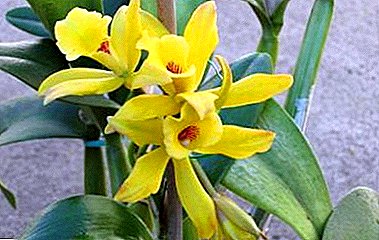 The substrate is well moistened.
The substrate is well moistened.- Carefully removed the bush from the pot.
- Cut off damaged and dry roots.
- The places of damage are covered with crushed coal.
- Drainage poured into the bottom of the new tank.
- The plant is placed in a new pot.
- Used method of transshipment (saved earthen room).
- Empty spaces are filled with a new substrate.
- Watering regular.
How to multiply?
The easiest and most affordable breeding method is grafting.
Rooting procedure cuttings:
- Part of the stem is cut 30 - 35 cm.
- At the bottom of the cutting all the leaves are cut.
- The cutting is deepened into the finished wet substrate.
- For support of a sapling the support is established.
- Capacity can be covered with cling film.
- The greenhouse is ventilated every day.
- Tanks are removed in a shaded place.
- Content temperature - 25 ° C.
- The soil is regularly moistened.
- Rooting takes place within 4 weeks.
- The film is removed.
We offer you to watch a video about cuttings of vanilla orchid:
Diseases and pests
- From the stagnation of water in the pot roots begin to rot. Stem rot may occur. Required transplant to a new substrate. Cut infected stems and roots.
- From dry air, insufficient moisture, the leaves turn yellow. You should add watering and spraying the bush.
- From the scorching direct sun on the leaves appear spots - burns. It is necessary to shade the windows or rearrange the pots to another place.
- Warm shower and soaking is an excellent prevention of the appearance of scythes and spider mites.
- When pests appear, the bushes should be sprayed, the soil should be treated with a phytoderm solution or other insecticides.
Proper care, transplanting, regular pruning are important.This allows you to very quickly grow a real tropical creeper on your windowsill.


 The substrate is well moistened.
The substrate is well moistened.